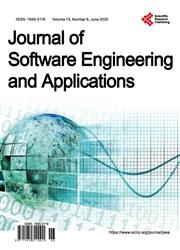A Scalable Synthesis of Multiple Models of Geo Big Data Interpretation
引用次数: 2
Abstract
The paper proposes a scalable fuzzy approach for mapping the status of the environment integrating several distinct models exploiting geo big data. The process is structured into two phases: the first one can exploit products yielded by distinct models of remote sensing image interpretation defined in the scientific literature, and knowledge of domain experts, possibly ill-defined, for computing partial evidence of a phenomenon. The second phase integrates the partial evidence maps through a learning mechanism exploiting ground truth to compute a synthetic Environmental Status Indicator (ESI) map. The proposal resembles an ensemble approach with the difference that the aggregation is not necessarily consensual but can model a distinct decision attitude in between pessimistic and optimistic. It is scalable and can be implemented in a distributed processing framework, so as to make feasible ESI mapping in near real time to support land monitoring. It is exemplified to map the presence of standing water areas, indicator of water resources, agro-practices or natural hazard from remote sensing by considering different models.地理大数据解释多模型的可扩展综合
本文结合利用地理大数据的几个不同模型,提出了一种可扩展的模糊环境状态映射方法。该过程分为两个阶段:第一个阶段可以利用科学文献中定义的不同遥感图像解释模型产生的产品,以及领域专家的知识(可能定义不清)来计算现象的部分证据。第二阶段通过利用地面实况的学习机制整合部分证据图,以计算合成的环境状态指标(ESI)图。该提案类似于一种集成方法,不同之处在于,聚合不一定是一致的,但可以在悲观和乐观之间建立不同的决策态度模型。它是可扩展的,可以在分布式处理框架中实现,以便在接近实时的情况下进行可行的ESI映射,以支持土地监测。举例来说,通过考虑不同的模型,通过遥感绘制存在的积水区、水资源指标、农业实践或自然灾害的地图。
本文章由计算机程序翻译,如有差异,请以英文原文为准。
求助全文
约1分钟内获得全文
求助全文

 求助内容:
求助内容: 应助结果提醒方式:
应助结果提醒方式:


